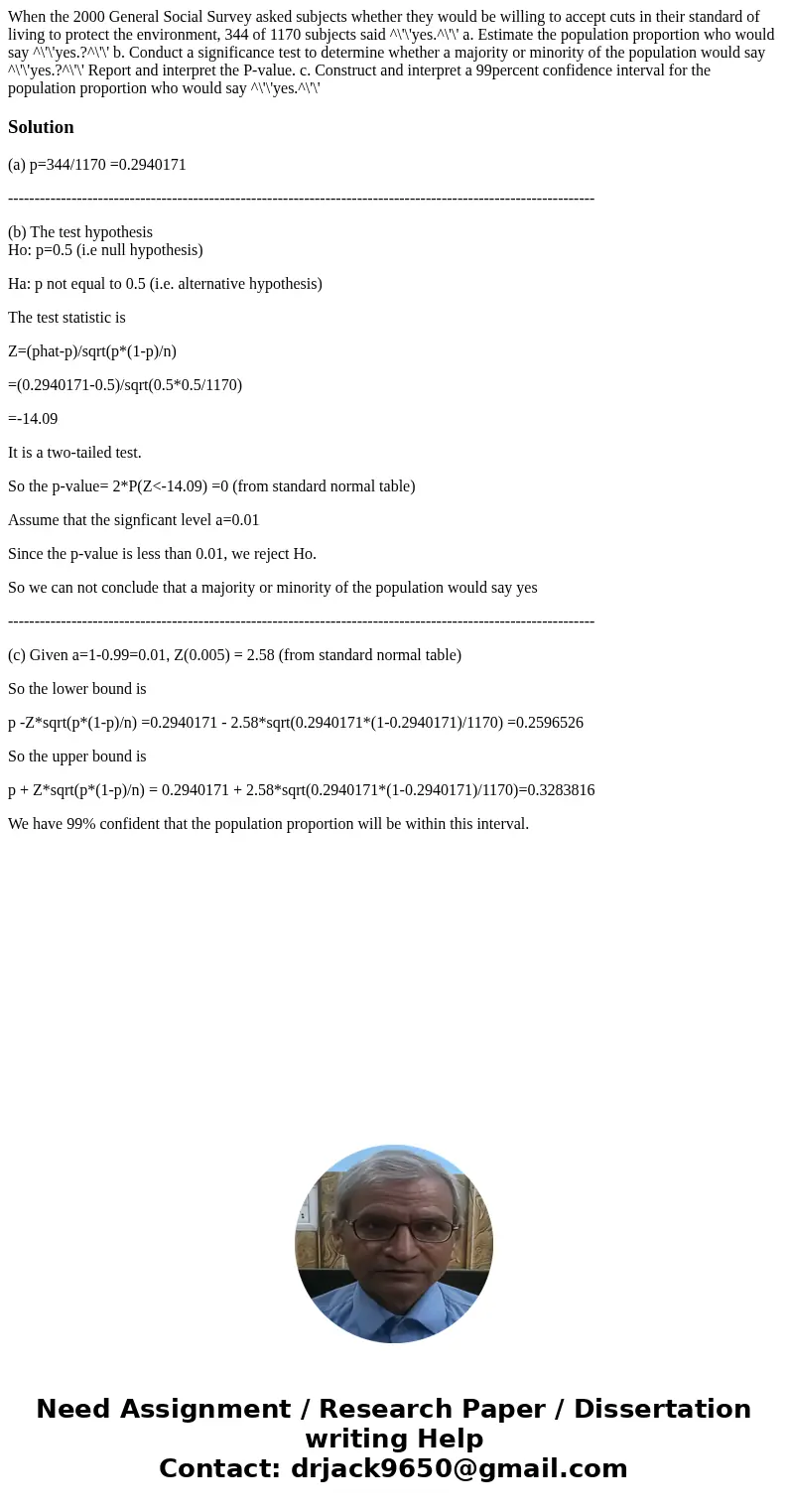When the 2000 General Social Survey asked subjects whether t
Solution
(a) p=344/1170 =0.2940171
---------------------------------------------------------------------------------------------------------------
(b) The test hypothesis
Ho: p=0.5 (i.e null hypothesis)
Ha: p not equal to 0.5 (i.e. alternative hypothesis)
The test statistic is
Z=(phat-p)/sqrt(p*(1-p)/n)
=(0.2940171-0.5)/sqrt(0.5*0.5/1170)
=-14.09
It is a two-tailed test.
So the p-value= 2*P(Z<-14.09) =0 (from standard normal table)
Assume that the signficant level a=0.01
Since the p-value is less than 0.01, we reject Ho.
So we can not conclude that a majority or minority of the population would say yes
---------------------------------------------------------------------------------------------------------------
(c) Given a=1-0.99=0.01, Z(0.005) = 2.58 (from standard normal table)
So the lower bound is
p -Z*sqrt(p*(1-p)/n) =0.2940171 - 2.58*sqrt(0.2940171*(1-0.2940171)/1170) =0.2596526
So the upper bound is
p + Z*sqrt(p*(1-p)/n) = 0.2940171 + 2.58*sqrt(0.2940171*(1-0.2940171)/1170)=0.3283816
We have 99% confident that the population proportion will be within this interval.

 Homework Sourse
Homework Sourse